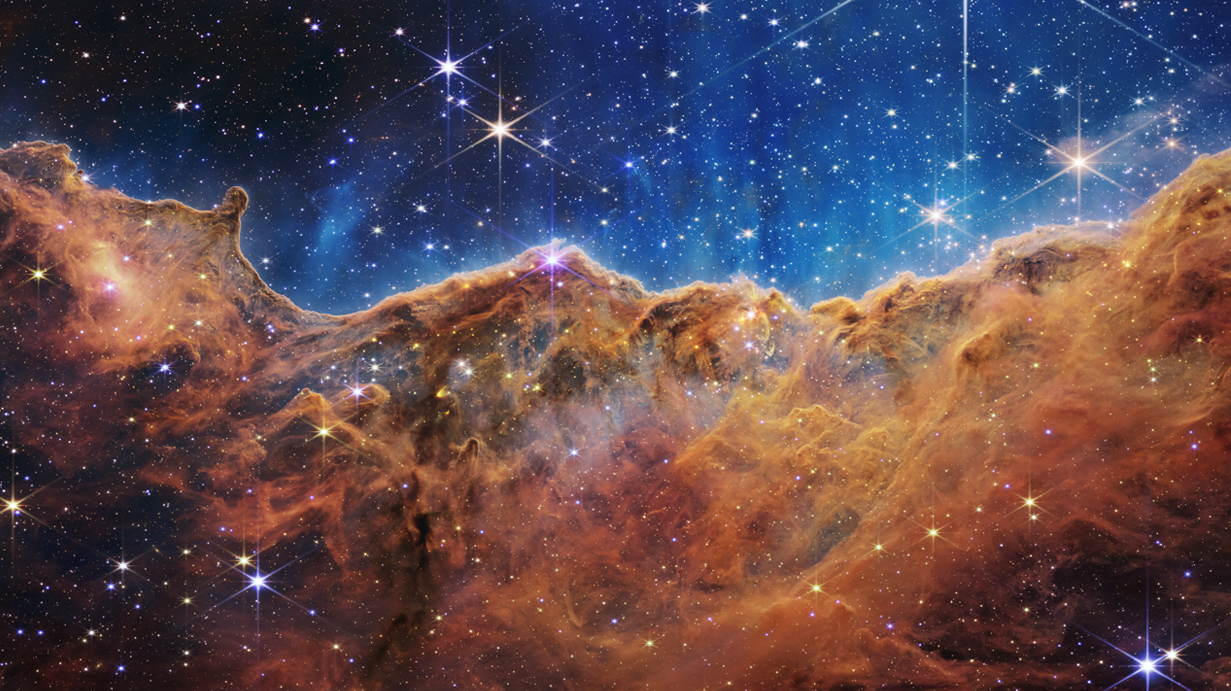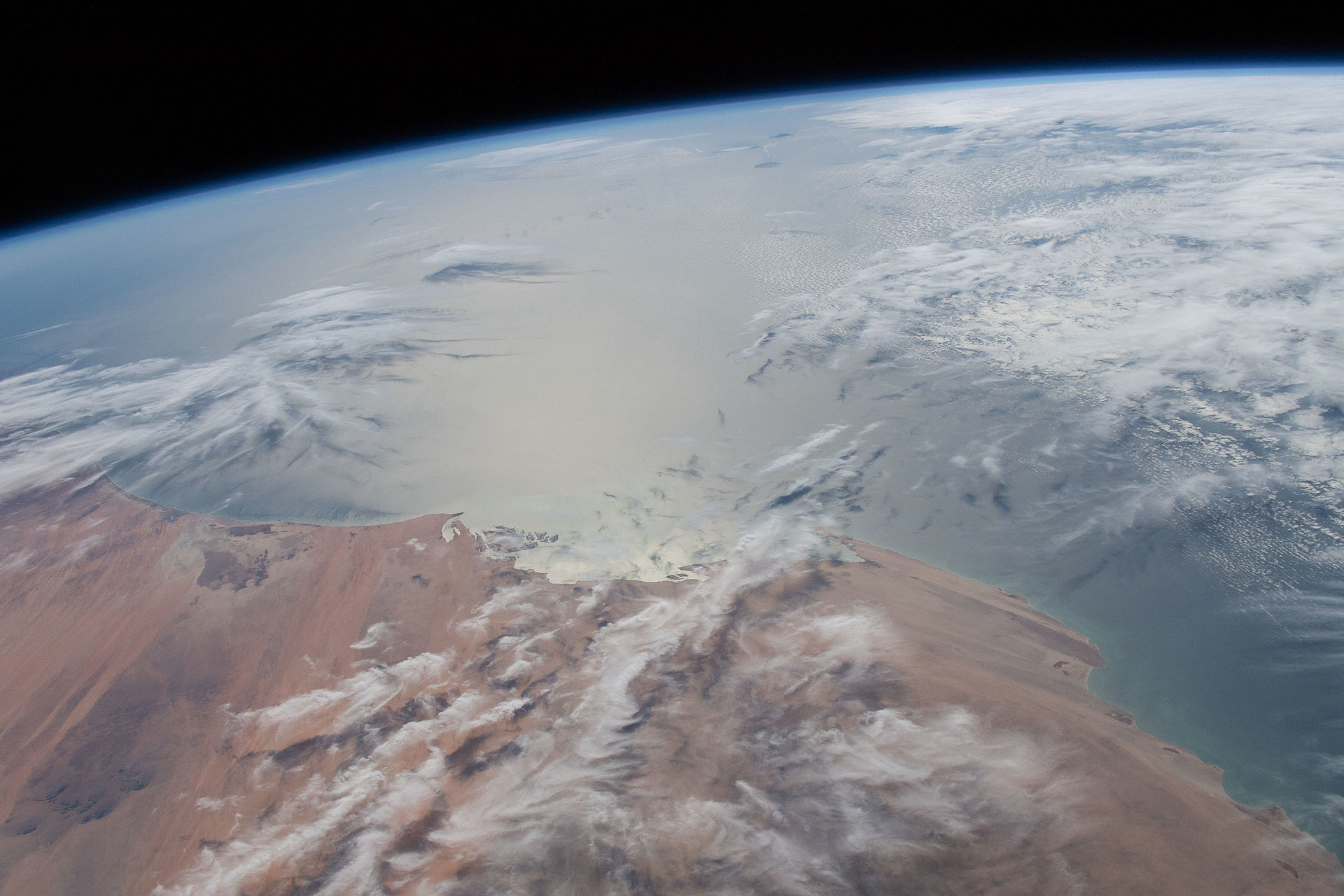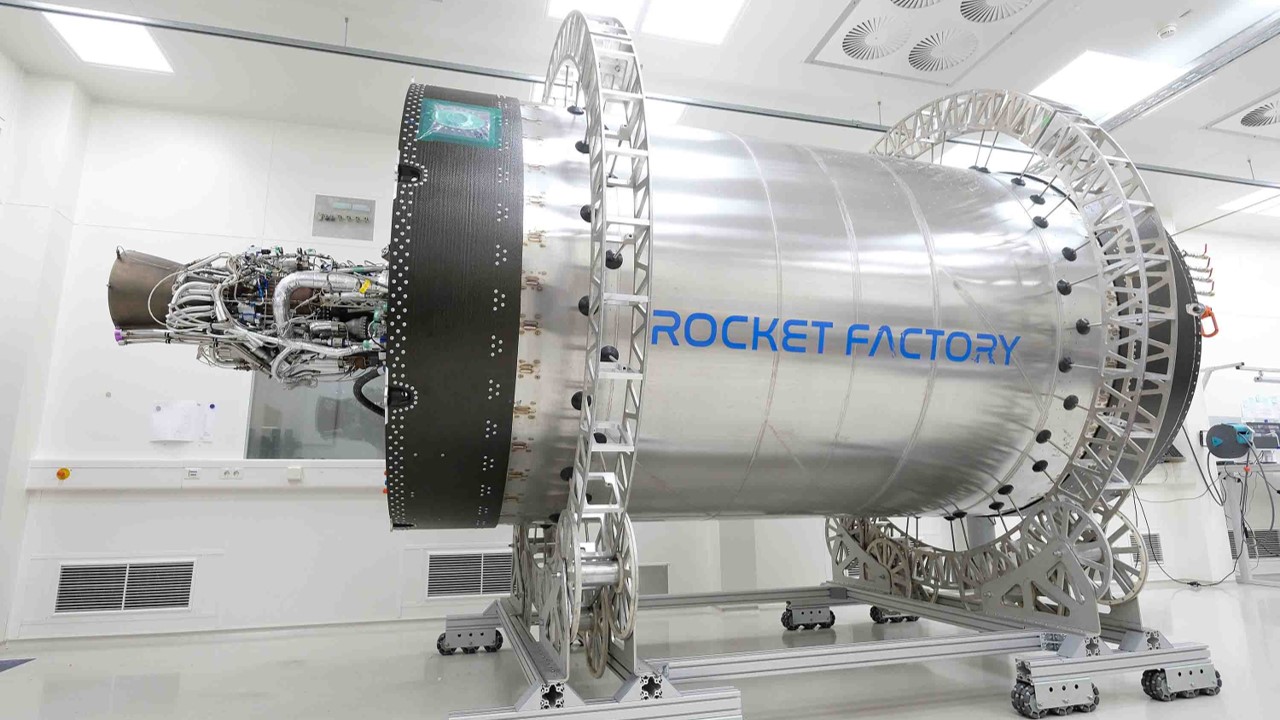20 July 2022. "Physics becomes poetry" is the translation of the headline recently used in the weekly newspaper Die ZEIT to describe the spectacular image of the new James Webb Space Telescope (JWST) that NASA presented to the public on 12 July 2022. There is hardly a better way to describe the effect that this image of the galaxy cluster SMACS J0723 has on the viewer. At least for me, I can say this: I would almost speak of humility or even reverence if I were to describe the feelings that this and also the other published pictures of the JWST have triggered in me.
Images of the past
The image of the galaxy cluster – also called the James Webb Deep Field – provides a previously impossible, much deeper view of the universe. The galaxies that can be seen behind the cluster SMACS J0723, which is about 4.5 billion light years away, are much, much older. Astronomers date them to around 13 billion years ago. Thus, we are literally looking into the puberty of the universe. Never before have humans been able to see so far into the past and, above all, with such clarity. This was made possible by an instrument that took 24 years to develop and build. Over this period, around 20,000 people worked on the telescope. In the end, the cost was around 10 billion dollars.
But despite this enormous sum, I dare to predict that the James Webb Telescope will be worth every cent of it at the end of its life in about 20 years.
Distance from Earth sharpens the view of ourselves
In addition to ground-breaking discoveries that will surely occur in the years to come with the help of the high-precision instruments, the images will also have a formative influence on our view of the origin of everything. The deeper, wider and sharper James Webb's view into the origins of our universe becomes, the more we humans will become aware of ourselves. For it is only the distance to the Earth that provides us with a very intense view of ourselves.
This effect has happened before – on Christmas Eve 1968, when the crew of Apollo 8 reached the orbit of the moon. After the fourth of ten orbits, NASA astronaut William Anders takes a few pictures of the Earth he sees behind the lunar horizon with his Hasselblad camera. At the time, he could not have known that his pictures of the rising Earth would become icons. But the picture that goes down in history as "Earthrise" changed humankind's view of itself forever. It was the first time ever that people literally looked at themselves.
The effect that captivated the astronauts back then is now commonly referred to as the "overview" effect. Apollo 14 astronaut Edgar Mitchell, who in 1971 became the sixth person to set foot on the Moon, once described this impression thus: "All matter in our universe is created in star systems and so the matter in my body, the matter in the spacecraft, the matter in my partners’ bodies was the product of stars. We are stardust. And we are all one, in that sense.”
Lifespan of the telescope has just begun
And viewed in this way, the James Webb telescope is incredibly fascinating to me. Because with the images we can expect, we will be able to literally see the birth of this "stardust". In other words: We are looking into the delivery room of the universe. In the end, however, this means nothing other than that we suddenly have a picture of how everything existential came to be. Even we humans. Because what spread out further and further into the universe from the big bang at that time became stars and planets – and at some point 4.6 billion years ago also the Earth, on which plants, dinosaurs and humans evolved at some point.
But what I am most excited about concerning the new observatory in space is what is yet to come. The results that have wowed the world in recent days are based on just five days of observation. The real work with the telescope is only just beginning. Now thousands of research institutions around the world are booking observation time to point James Webb at their chosen patch of sky. I am sure that these observations will turn our previous ideas about the conditions in the universe upside down. This was also the case with the Hubble telescope. The famous deep-field image from 1995 revolutionised our understanding of the universe. At that time, researchers pointed the Hubble telescope at a seemingly empty, black spot in space for ten days – and subsequently saw an image on which around 3,000 galaxies were depicted that no one had previously known existed.
I am therefore firmly convinced that the James Webb Telescope will tell us many new, incredible and fascinating stories about where we come from and what we are. I recently turned 60 years old. And because I plan to keep well, hopefully I will still be able to consciously experience some of the findings of this super-observatory for myself. The prospect of that excites me very much.
Personal details:
Born in 1962, Marco Fuchs studied law in Berlin, Hamburg and New York. He worked as an attorney in New York and Frankfurt am Main from 1992 to 1995. In 1995, he joined OHB, the company that his parents had built up. He has been Chief Executive Officer of OHB SE since 2000 and of OHB System AG since 2011. Marco Fuchs is married and has two children.






